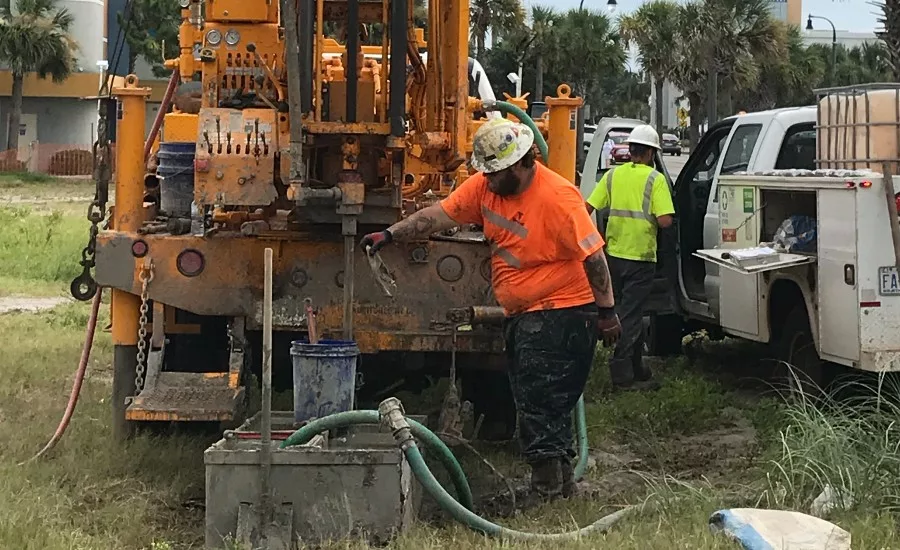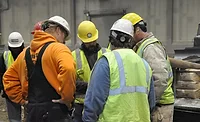How Can We Make Drill Training More Effective?
Start by Understanding the Four Main Learning Styles

Nothing quite trains you for running heavy equipment like hands-on, kinesthetic learning. However, effective training also adds visual, auditory and written aspects to the mix to cater to different learning styles.
Source: Jeremy Verdusco
Over the last few articles, we talked about how to make training more relevant. In this month’s article, I'd like to talk about how to make that training as effective as possible. To do that, we first identify our audience. Then, we plan a training session that includes curriculum designed to appeal to the four main types of learners.
Many drillers consider themselves “hands on,” or what experts call kinesthetic, learners — and they may be right. In a world of kinesthetic learners, we would never have to leave the field for formal training. However, having an employee figure out a new or sensitive process on the fly with potentially millions of dollars of capital equipment and small margins for error does not seem like a good idea. Knowing that, we can start to optimize our training by recognizing that nobody is just a kinesthetic learner.
So what are the major types of learners?
- Visual: Visual learners have better retention with information presented in a graphic depiction. Think of arrows, charts, diagrams, symbols and more. Visual learners thrive with pictures or cutaways of complex processes.
- Auditory: Sometimes referred to as “aural” learners, auditory learners prefer listening to information presented vocally. However, that doesn't mean just lectures. These learners work well brainstorming in groups.
- Written: Focusing on the written word, reading and writing learners succeed best with written information. These learners take notes and thrive when they can reference manuals and other documentation.
- Kinesthetic: Taking a physically active role, kinesthetic learners thrive when engaging all their senses in hands-on situations.
Learners often favor one of these types, but everyone has a secondary learning style in addition to their main learning style. Once we realize that, it’s easy to see why we need to include as many different styles in our training as possible.
Training for Different Learning Types
Consider a typical training session on mud testing, for example. Before doing a filter press test, you might:
- Describe the inner workings of your bentonite-based mud. “Bentonite is comprised of thousands of little platelets. Think of those platelets like shingles. If we’re going to shingle your roof, we’re going to layer the shingles on each other so that the rain cannot penetrate your roof.” (Auditory)
- Draw on a white board a representation of bentonite platelets layering on top of one another as our fluid filtrates into a sand seam. (Visual)
- Have our students look up the recipe our mud supplier provided or we have decided on for the given formation. (Written)
- Demonstrate a filter press test, having students write notes for time and pressure. (Auditory, Visual, Written)
- And, finally, have them conduct a filter press test. (Kinesthetic)
Using this method, we would have a very high likelihood of learners retaining the information presented. However, one more step goes a long way in cementing the information into the learners’ brains: a little thing called the “teach back.” You have a student teach what they just learned back to the next student under the instructor’s guidance. Studies show following the “hear, see, do, teach” method can increase retention rates as high as 90%.
Prepare for Effective Training
So far, we’ve talked about student learning styles, but I consider instructor preparation just as important. Trainers should have a lesson plan for all training activities. The lesson plan lays out important details for the instructor to guarantee the training covers all necessary components. Start with the objective, or reason, for the training. State simply and clearly the purpose for the training. Next and just as important, we have to identify what learning outcomes we want students to attain by the end of training. Think of these learning outcomes as the questions you want students to be able to answer at the end of the training. Finally, our lesson plan should identify how we’re going to meet each type of learner’s needs, resource materials learners should consult and the exact length of each section of the training. I’ve included a sample lesson plan and learning outcomes with this article.
Trainers should have a lesson plan for all training activities. … Start with the objective, or reason, for the training.
I know it sounds basic to say we have to know what we want to teach before we teach it in order for our students to receive all the information we intend to give them. However, I’m reminded of a discussion I had on this very topic with my good friend, drill trainer and The Driller contributing writer Brock Yordy. We spoke about an experience he had in speech class where someone gave a speech on how to make a peanut butter and jelly sandwich. It sounded simple enough, and I’m sure the student thought they were just going to whip right through the speech with little effort. What they didn’t realize was that they had wandered into becoming a trainer when they decided to do a how-to speech.
Once they started the speech, the teacher began asking questions. How do you know where to get the bread? What kind of knife? Did you tell me to open the jars? How do I open the bread bag? And so on. The teacher illustrated a rule of thumb for training: An instructor needs two to four hours of prep time for every hour of training time they deliver. Those new to training or who only train once in a while may need even more time.
Teaching to different learning styles and preparation go a long way toward making training sessions effective. I hope you get a chance to share your knowledge and influence others to continue to thrive in this industry we love.
Until next time, keep turning to the right.
Lesson Plan Examples
Good trainers put a lot of preparation into training to help learners get the most out of it. Use these examples to inspire your own training preparation:
Looking for a reprint of this article?
From high-res PDFs to custom plaques, order your copy today!




